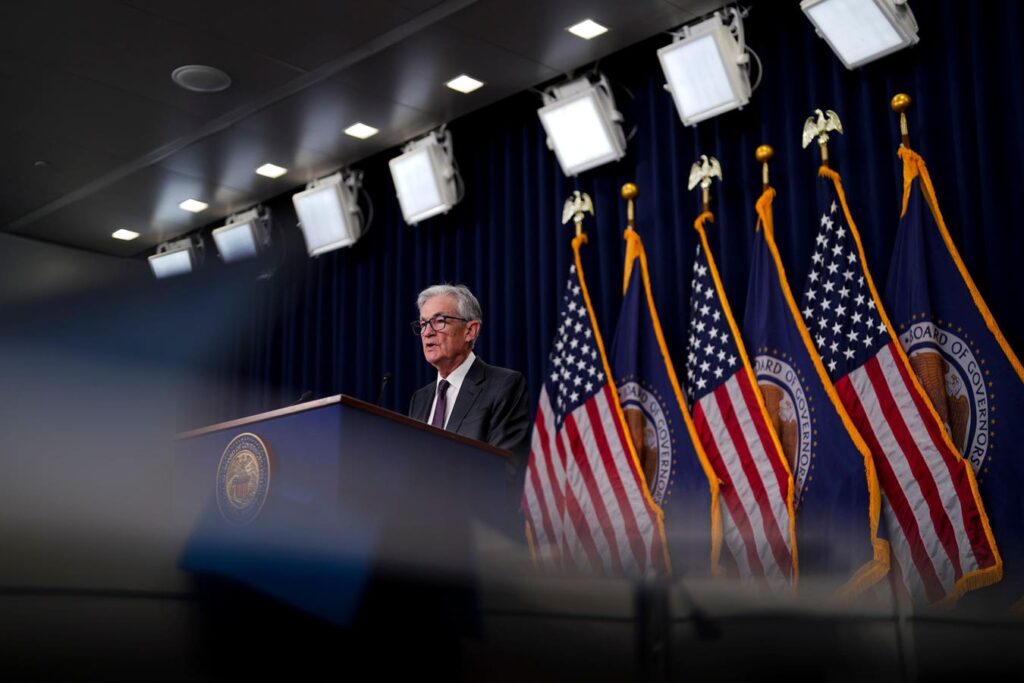Tariffs on U.S. goods and services could further limit cuts to interest rates in 2025. There’s now a small chance that interest rates could rise in 2025 according to the CME FedWatch Tool which measures the implied assessment of fixed income markets on interest rate decisions. That’s because tariffs on imports from China, Canada and Mexico are expected to raise prices for consumers. Retaliatory tariffs and strategic decisions from firms may complicate the economic picture, too.
Even before the recently announced tariffs, the Federal Open Market Committee argued that more progress towards its 2% inflation goal was needed and the chance of interest rate cuts was diminishing. For example at a press conference on January 29, Fed Chair Jerome Powell, said. “Inflation down to 2 percent sustainably is what we’re trying to achieve. We’re somewhat above that, and we want to see serial readings that suggest that we’re making further progress on inflation.”
Currently markets see it as possible that short-term interest rates don’t decline in 2025 at all, or could even rise. However, there remains approximately a 50% chance of some level of interest rate cuts on recent market estimates.
Executive Order On Tariffs
President Trump’s Executive Order of February 1, 2025 imposes an additional 25% tariff on imports from Mexico and Canada, and 10% on Chinese imports. Oil from Canada will see a 10% tariff. Still, the tariffs remain in flux, the Mexico tariff is now delayed until March.
Tariffs generally lead to increases in the prices of impacted good and services. For example, washing machines rose in price almost 12% after 2018 tariffs according to a 2019 National Bureau of Economic Research paper titled, “The Production Relation and Price Effects Of U.S. Trade Policy”. A 2020 paper from the the Center from Economic Policy Research titled “Who’s Paying for U.S. Tariffs?” reached a similar conclusion finding that, “U.S. tariffs continue to be almost entirely borne by U.S. firms and consumers”.
However, there are other complications, too. Tariffs can lead to price rises on other products not subject to tariffs. For example, research on washing machine prices rising 12% in response to tariffs found that dryers also rose in price by a similar amount. That’s even though dryers were not subject to tariffs.
There could also be knock-on impacts for domestic markets if U.S. exporters are subject to tariffs as exporters seek to replace lost sales if subject to retaliatory tariffs, such as Canada is planning.
Lastly, sector dynamics can impact tariffs too, for example, for steel exporters to the U.S. have cut import prices in the past to offset some of the price impact of tariffs and maintain market share. However, that is a less common reaction according to research. Overall, tariffs if maintained at current levels, are likely to prove inflationary at least temporarily.
The Fed’s Decision Making
The FOMC emphasizes data dependence in its decision making. The next Consumer Price Index Report on February 12 for January will will not include any impact from February’s Executive Order on tariffs. However, Februarys’ CPI reading will be released on March 12, before the next FOMC meeting on March 19 and that as well as anecdotal data may provide an early read on how inflation is impacted by tariffs.
Still, markets saw little chance of a March interest rate cut even before tariffs and currently the chance of a cut is estimated at approximately 15%. Therefore, March’s meeting will likely be more about the FOMC’s outlook and forecasts for 2025 as more data on tariffs emerges. The impact of tariffs aren’t the only thing that the FOMC will be watching for, but, for now, they appear to have made 2025 interest rates cuts a little less likely.
Read the full article here


